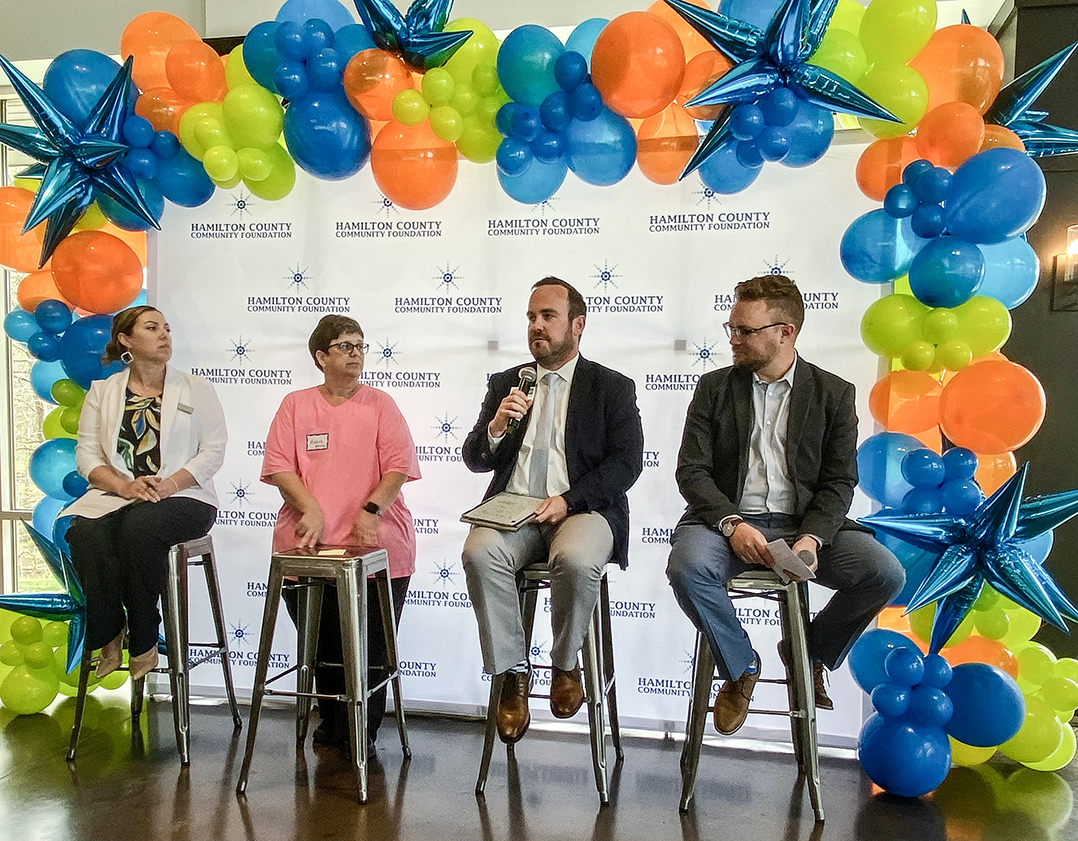Affordable housing, child care, transportation, social services and education are common concerns among Hamilton County residents, especially those in the lower income brackets.
That was the takeaway from a monthslong community needs assessment, spearheaded by the Fishers-based Hamilton County Community Foundation — a process that involved community listening sessions, interviews, data analysis and surveys.
The findings were presented April 17 during an event at The Bluffs at Conner Prairie.
Kristen Moreland of Schunk Moreland Strategies, which worked with the foundation to compile the report, talked a little about the methodology that went into creating a 20-page needs assessment. She also gave some highlights of the findings. One disparity she noted is the difference between the northern and southern parts of the county.
“It’s really a tale of two counties, and that came up multiple times,” she said.
For example, the median household income in Atlanta is more than two times lower than Carmel’s — about $57,000 versus about $133,00 — and while child care options are a concern everywhere, that service is particularly difficult to find in northern Hamilton County.
Moreland said the report focused on five key areas identified through the data collection process.
“First, affordable housing is identified as a bedrock for overall well-being,” she said. “Second, education and training are pivotal — it’s not just about gearing up for the job market, but also enriching lives and purpose and offering pathways for personal growth. Third, we can’t overlook the breadth of social services that are needed — ranging from ensuring food security to mental health support and, not to mention, tailored help for those in our community that are most vulnerable. (Fourth), child care solutions are another linchpin, particularly those that help with costs and offer flexibility for working parents. And last but not least, transportation.”
Moreland said that without reliable transportation, residents can’t access other services, such as food pantries or medical appointments, and can find it challenging to get to and from a job.
The event also included a panel discussion led by Hamilton County Commissioner Mark Heirbrandt, with panelists Yolanda Kincaid of Janus Developmental Services, Andrea Davis of HAND, Inc., Dave Hyatt of Riverview Health and Mike Thibideau of Invest Hamilton County.
Heirbrandt noted that Hamilton County has experienced “explosive” growth in recent years.
“The net increase population creates a lot of challenges for us,” he said. “As county commissioners, we represent the entire county and we’re tackling a lot of tough and very complex, complicated issues, such as affordable housing, education, training, workforce opportunities, the importance of social services that we offer, also child care — you’ve heard a lot about that, and we continue to hear about that. It’s something that needs to be addressed. And then, finally, transportation options that could be available here in our county.”
Hyatt talked about health equity, and said some residents have barriers to health care, including the five needs identified in the report.
“By the time you get to our facilities, we’re going to be spending a lot more time trying to correct those things, where we need to work to be more proactive as a community and really look at how do we address these problems in advance, before they come to our doors, before they end up in the emergency department,” he said.
Thibideau added that while the county’s percentage-of-population numbers are relatively low for certain needs, the actual number of people in need is high.
“Hamilton County is, I believe, the lowest percentage of our population enrolled in Medicaid in the state of Indiana, but it’s still 43,000 people,” he said. “That’s a lot of people who need additional assistance. But if you just look at as a percentage of our population, our statement of need seems like less,” which can make it difficult to qualify for grants and other assistance.
Davis said there’s simply not enough housing in Hamilton County, which is why costs keep rising. She said about 43 percent of the population is ALICE — asset and limited-income constrained but employed.
“People move here because of our schools and our safety and our health care,” she said. “They’re prioritizing their housing costs over everything else. I can’t think of any other reason why we have more than 50 food pantries in one of the richest counties in the state.”
Kincaid agreed and said the housing issue is worse for people with intellectual and developmental disabilities who are able to live independently but can’t afford to.
“Definitely a tip of the hat to Hamilton County Community Foundation for looking into this assessment,” she said. “I think that getting the information and data out there for folks to be able to digest is a great first step to being able to create the plan for action going forward.”
Moreland said the study will be used to develop collaborative initiatives to address identified needs.
For more about the foundation, visit hamiltoncountycommunityfoundation.org.





